The push for the decarbonisation of the energy sector raises multiple challenges for the industry. From new cost models to integrating renewable energy generation into the grid, embracing electrification, and addressing climate risk, it’s a complex landscape.
In this article, we’ll look at some of the ways in which energy leaders are using digital technologies and data to overcome these challenges and fast-track their journeys to decarbonisation.
Investors want clarity on climate risk
The energy and resources sector has provided periods of strong returns for investors. But these returns could now be jeopardised by a range of environmental, social and governance (ESG) factors.
A few examples of the impact of ESG in energy investment? Changes to markets for energy products, new national emissions reduction requirements and the effects of climate change, and the impact of adverse weather events on operational continuity.
It all means investors need transparency on climate risk. They’re demanding that companies have clear decarbonisation targets and plans, along with evidence that they’re meeting their financial and climate-related commitments.
Most companies have made a start on meeting these requirements. But constrained by operational boundaries, they’re adopting inconsistent approaches and working with disparate types of data.
In response, regulators are seeking decarbonisation strategies to create standards that ensure transparency, promote consistency, and prevent greenwashing.
Too much, too little, or not the right kind of data?
All this means additional information collection and disclosure obligations. To meet them, energy businesses will have to be able to access new data sources.
For organisations saddled with too much data, much of it inconsistent and not auditable for external reporting, this shines the spotlight on a critical issue: data management, validity, and robustness.
Software vendors are addressing this challenge by developing solutions geared towards sustainability; new cloud-based solutions are emerging from both specialist start-ups such as Carbon Chain and traditional software providers like SAP.
For some energy businesses, these sustainable solutions are a good way to meet regulatory demands while simplifying their data and software landscapes. Organisations with more complex requirements will need bespoke solutions.
For all these businesses, however, the greatest challenge is collecting and normalising their data.
Once they have the data, what are energy companies doing to reduce emissions?
There are plenty of examples of companies using digital and data to cut operational emissions.
Using machine learning to inform decisions on methane reduction technology
Collecting reliable data on methane emissions is a critical step to reduce leaks. Methane, released in venting and flaring, is one of the top targets for emissions reduction.
The Environmental Defense Fund’s satellite MethaneSAT will enable organisations and members of the public to locate and measure methane emissions from various sources, such as pipelines, tanks, and wells. This can help to identify, track and respond to methane leaks with greater coverage than before.
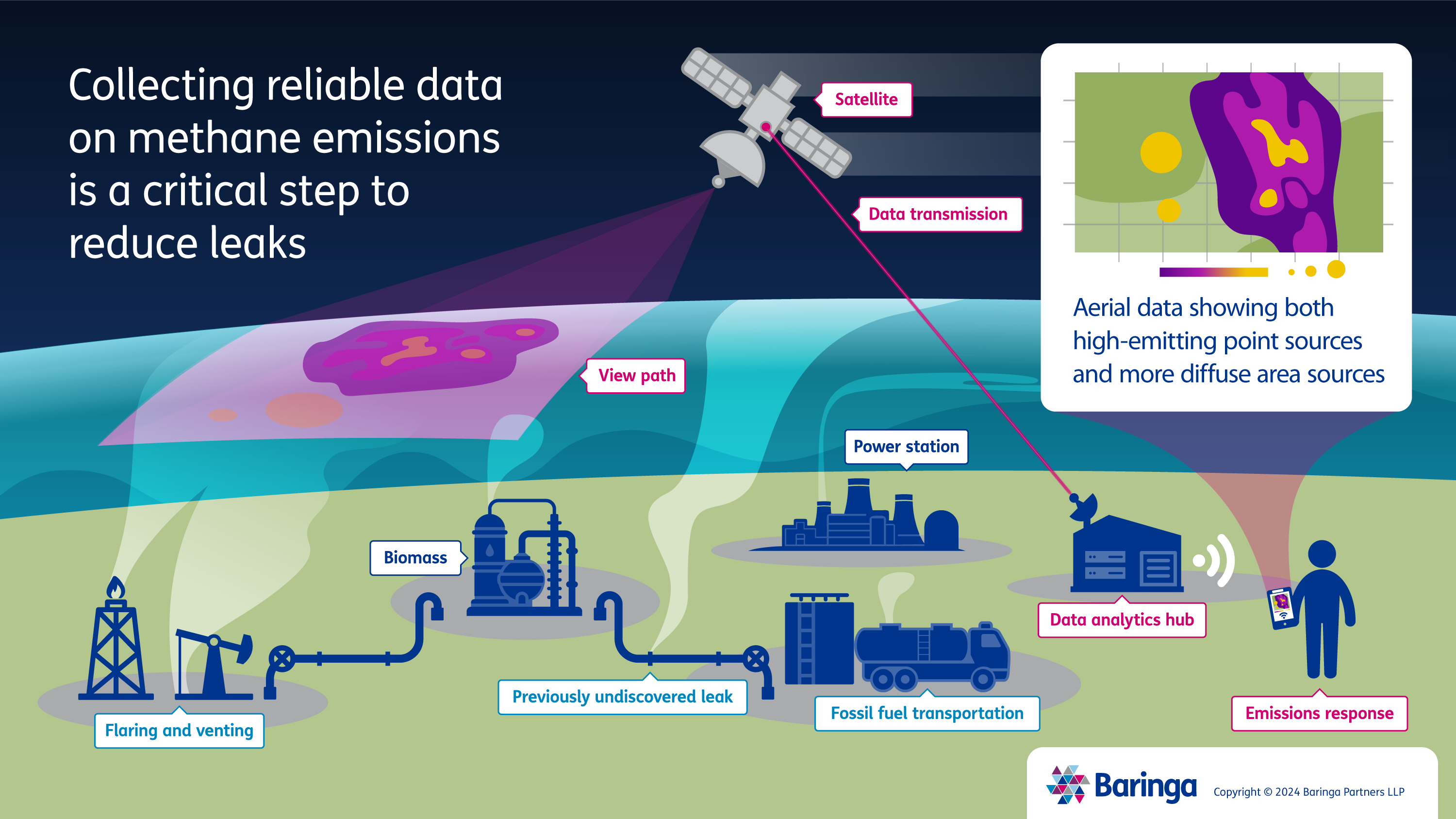
To actively manage emissions minute by minute data is essential. To achieve this level of granularity, companies can use sensors connected to AI machine-learning systems that automatically compute metrics such as flare efficiency in real time. Integrating that data into control-room practices allows operators to make better decisions – for example, when to flare – that drive significant emissions reductions.
Quick wins from digital integration in operations
More systematically, companies are working to determine the minimum emissions potential of their assets. If these levels are exceeded, they can identify procedural or engineering fixes to avoid recurrence.
The benefits of digital transformation in the energy sector can be massive. We’ve seen clients achieve 20% emissions reductions by integrating digital and data tools into operating practices, and increasing production at the same time – all with zero incremental capital expenditure.
Going beyond operational excellence to reach future decarbonisation goals
Operational excellence is making a difference. But on its own, it won’t get us to future decarbonisation goals such as the UK North Sea transition goal of cutting operational carbon emissions by 50% by 2030. So how do we address the main causes of remaining emissions?
Achieving more with cross-competitor global energy collaboration
Emissions from venting and flaring are often eliminated through engineering modifications to key systems. But on their own, these adjustments are not enough to deliver the required reductions. That requires electrification.
Governments around the world are providing incentives for companies to install electrical infrastructure. However, because these are often time-limited, there’s an urgent need to design and engineer solutions.
Solutions aren’t limited to electrification. Improved reliability and performance of key equipment – separators, for example – can also drive significant emissions reductions in oil and gas operations. Advances in digital twin technology, data and analytics are all enabling operators to achieve levels of performance that are unprecedented in this industry.
Operators are working together to create hub-and-spoke solutions for physically close assets to minimise cost and disruption. Here again, digital tools – including digital twins – are accelerating the development of standardised electrical equipment and skids (transportable modular rigs) that can be rapidly installed on different platforms.
Planning for cost optimisation and future flexibility
Our studies on the economics of offshore electrification show that offshore wind can provide an economic source of low-carbon power to decarbonise oil and gas installations.
However, when in operation, wind farms may provide too much or too little power for the oil and gas platforms. Our study shows that bi-directional sub-sea cables enable power to be exported to and from the grid from offshore wind assets when there’s too much or too little capacity.
By reducing the need for diesel generators for the offshore installation, this shrinks the carbon footprint of the construction process.
Achieving commercial value through physical proximity
Our analysis shows that the economics work best when proximate platforms (connected into the same oil or gas gathering system) are connected to a low carbon hub. This minimises any engineering changes required offshore and enables electrical equipment such as transformers to be shared.
This model requires different operators to come together. That could mean, for example, a wind farm developer and the network operator working together on a common solution. We’re helping clients build digital workplaces that provide secure areas for this kind of collaboration.
New operating models are also emerging from low-carbon hubs, which often combine carbon capture and storage with low-carbon power generation and hydrogen production (blue and green).
In the hubs it is important to provide customers and partners with proof that their carbon has been sequestered as companies need to use this information to demonstrate to regulators and customers that their operations are low- or zero-carbon. Here solutions build on blockchain technology, similar to those used to verify the providence of food, can be used to provide the necessary digital proof.
The people factor and the role of creative thinking in decarbonisation
Leading companies are encouraging their employees, customers, suppliers, and partners to come up with ways to use emissions data, financial information, and analytics to reduce emissions.
These ideas are analysed via marginal cost abatement curves (MACCs), tools that allow companies to prioritise their investments by illustrating the cost-effectiveness of different emissions reduction strategies.
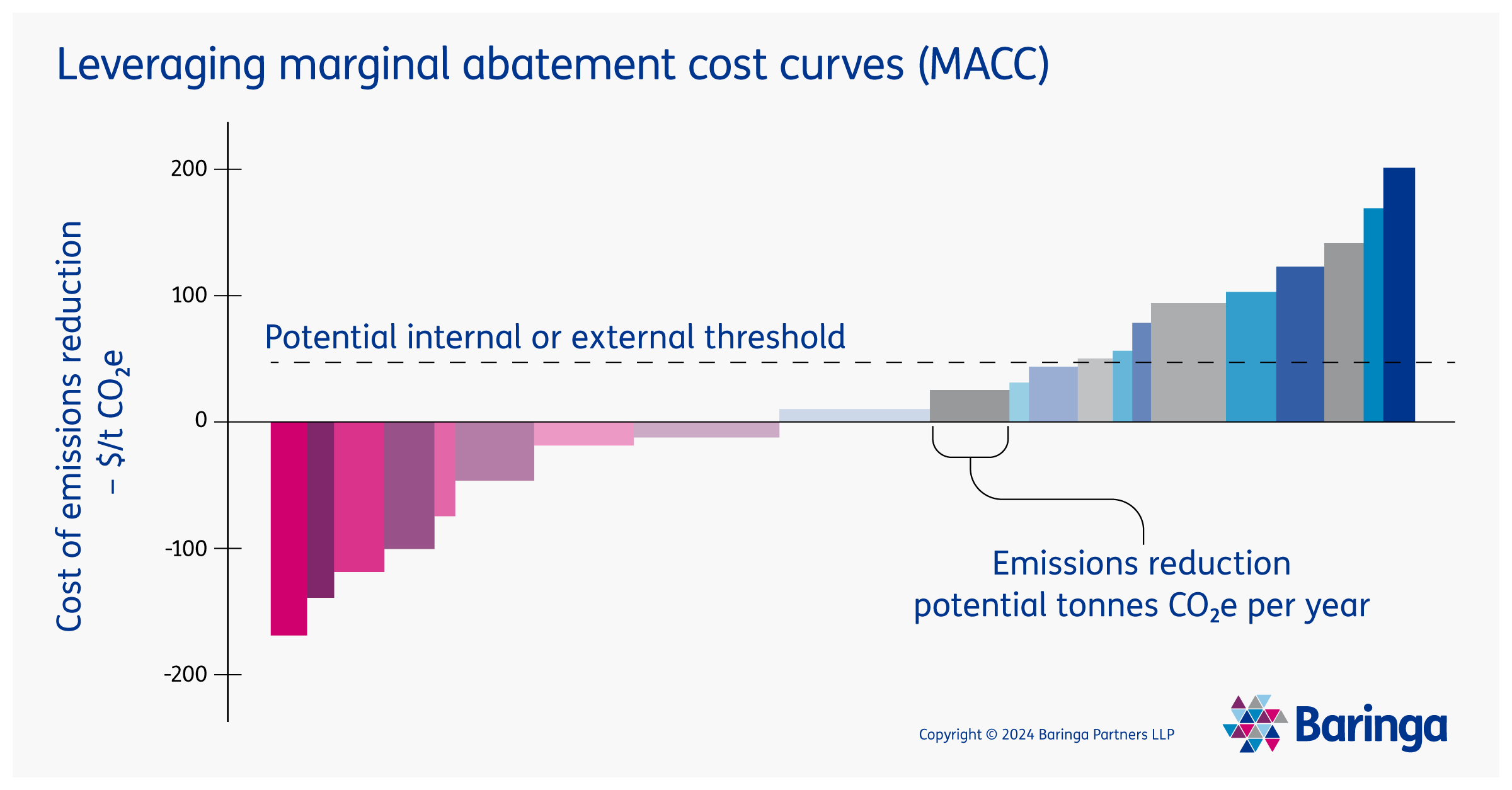
Some oil and gas majors are already using this approach to increase engagement across their operations, customers and partners. Examples include Shell’s Target One Team for employees who achieve carbon reduction targets and implement innovative solutions, the BP Rewards scheme which awards discounts to customers for choosing lower carbon fuels and products and Sinopec’s Green Development Fund which supports green innovations and products by suppliers and partners.
Shaping new operating models
New solutions for emissions reduction such as offshore wind and carbon capture, utilisation, and storage (CCUS), often with clean hydrogen production, require the industry to create different operating models.
Electrification and CCUS can provide various benefits for the energy sector, such as reducing emissions and creating new markets. However, they also involve challenges and present technical, regulatory, and organisational barriers.
The emergence of digital and data standards, and their rapid adoption, will be a key enabler for companies in low-carbon hubs to collaborate and partner in electronic commerce, quickly and efficiently.
Using AI in energy and utilities to give customers more choice and autonomy
Our experts in digital and organisational transformation, data and AI, operations, economics, and climate risk, are delivering sustainable and impactful solutions for the energy and resources sectors. We’re working with the world’s largest energy companies to develop and implement strategies to achieve net zero through:
-
Operational excellence and decarbonisation
-
Climate risk and sustainability
-
Investment in new energies and technologies.
If you’d like to discuss any of the topics raised in this article, or if you’d like to explore how Baringa can help your business, please contact our experts.
Our Experts


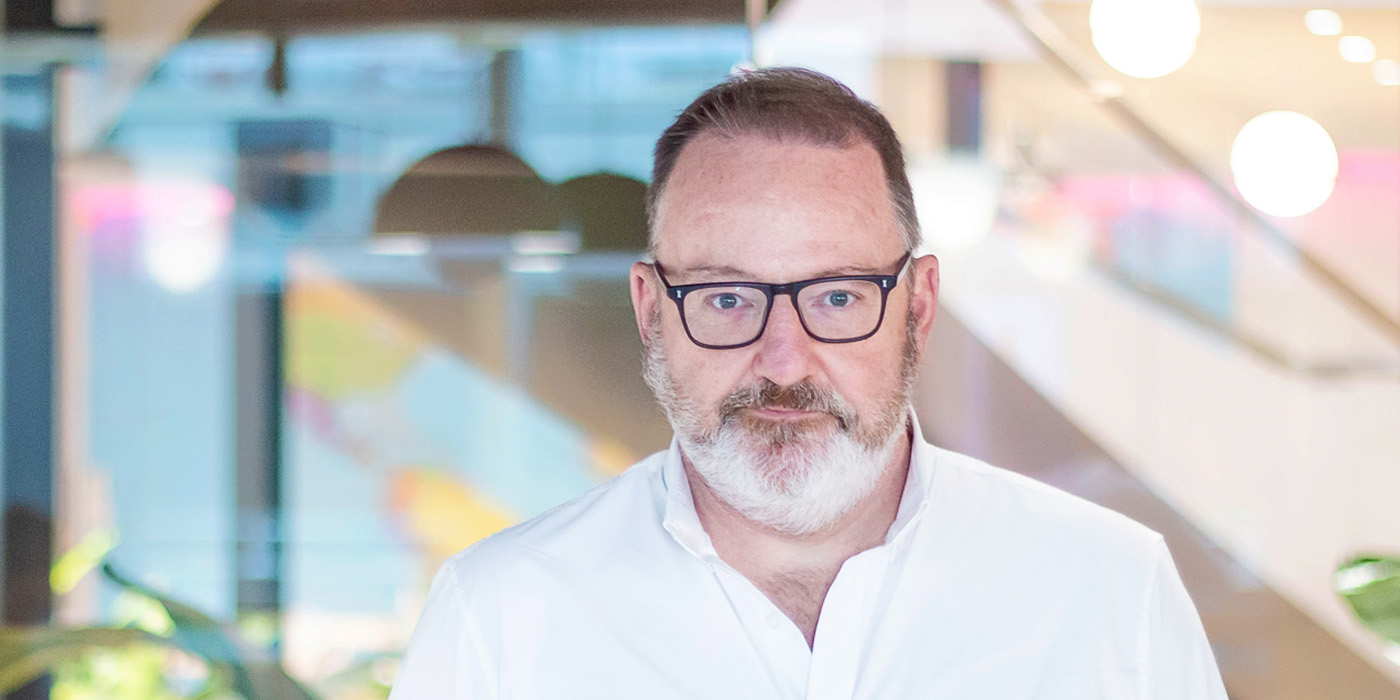
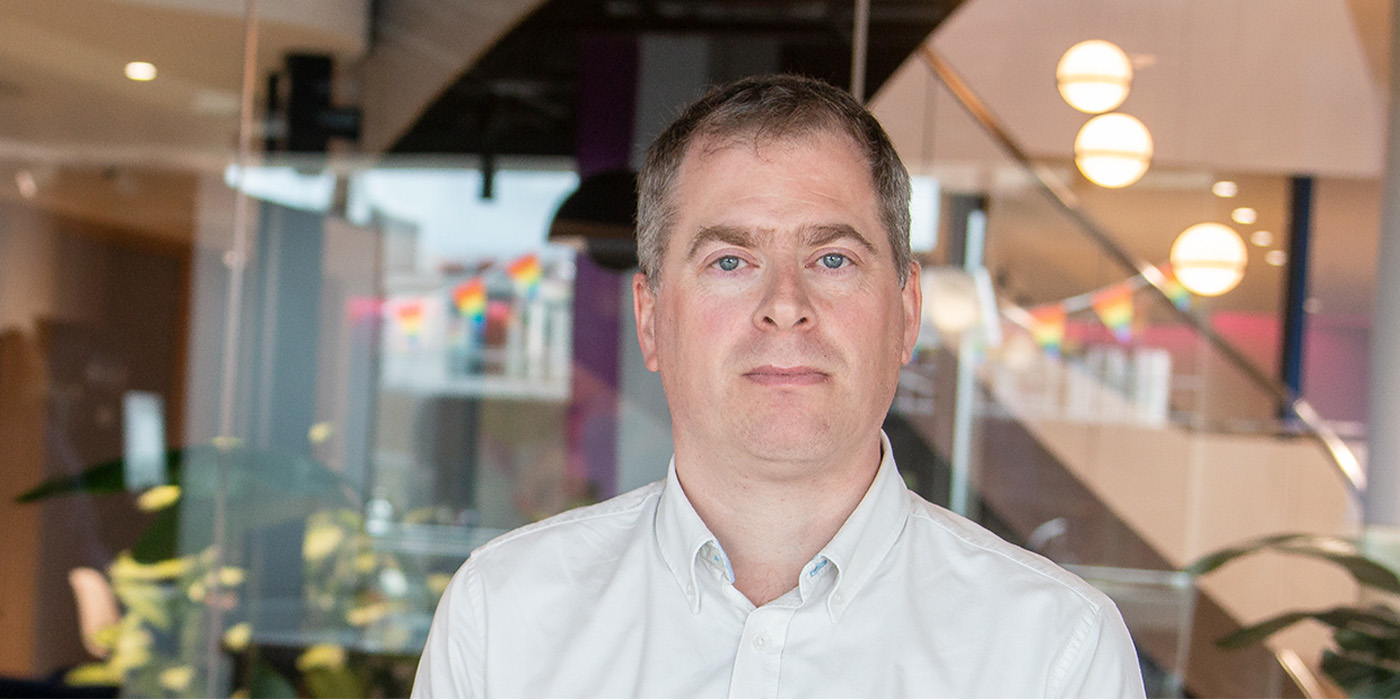
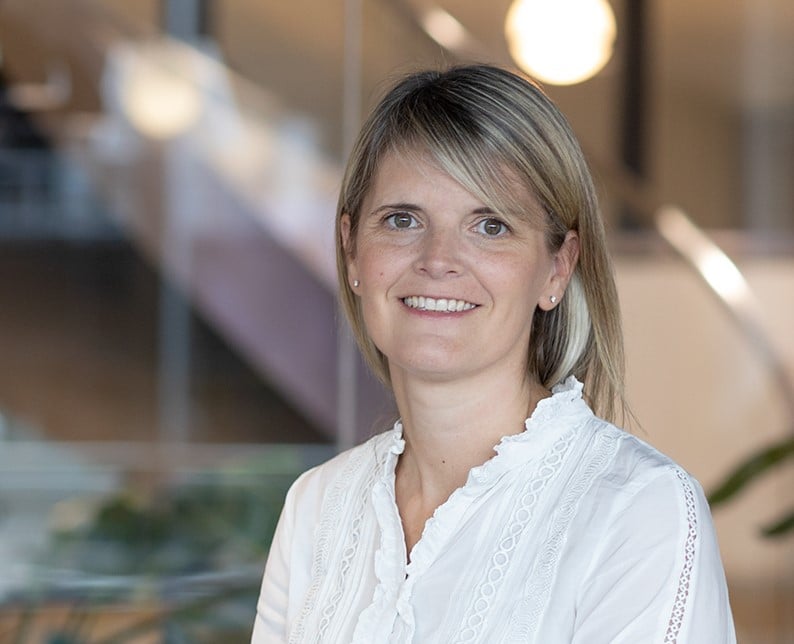
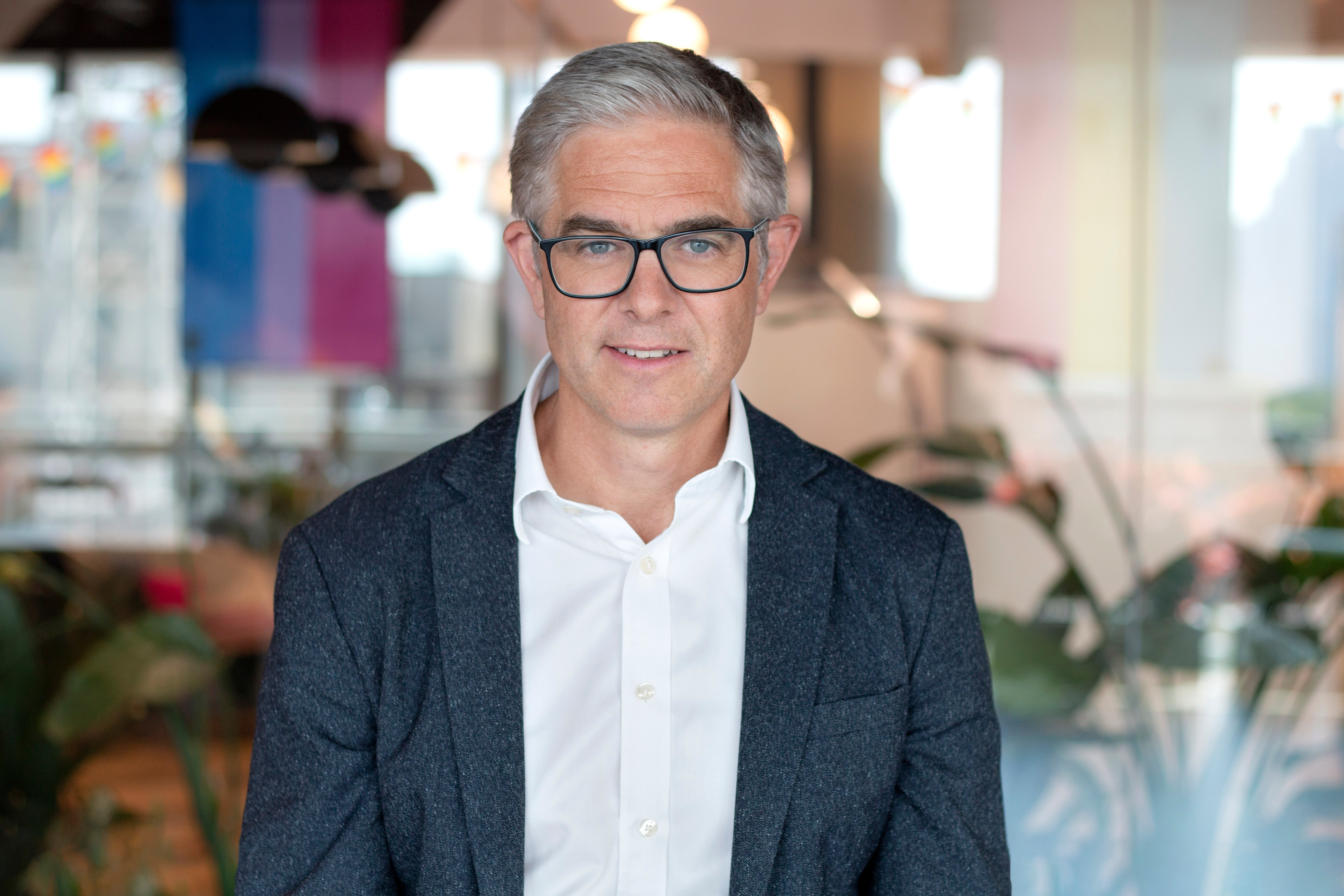
Our Insights

Measuring and reducing emissions reliably and consistently
Data quality and availability are often poor and scattered across different sources and regions.

Accelerating the energy transition with digital innovation
Let us help you find your best digital route through the energy transition.
Read more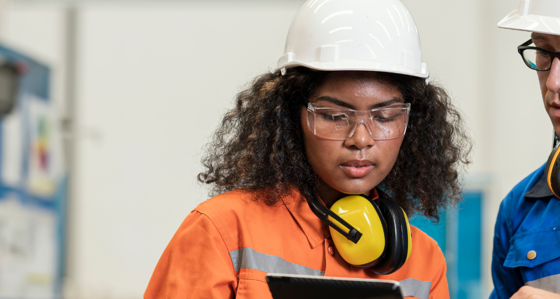
The risks and opportunities of emissions management
David Kane and Hugh Green discuss the risks and opportunities of emissions management.
Read more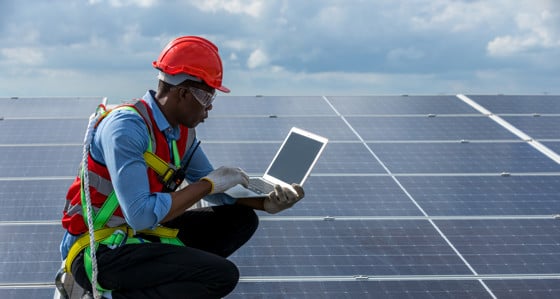
Embedding emissions measurement and reporting in your operating model
Embedding emissions management into a company’s operating model ensures that measurements are continually updated and used to influence decisions, supporting a company to meet reduction targets and gain a competitive advantage in the market. Discover the five steps of emissions management.
Read more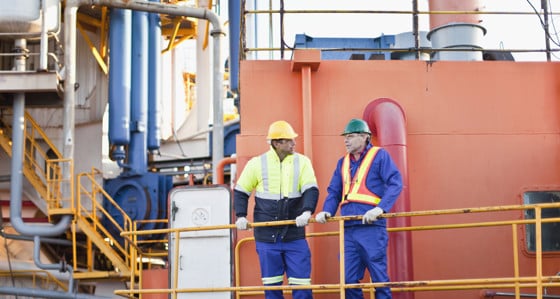
Seven steps for a successful emissions strategy
Driving factors for this shift include both risks and opportunities.
Read more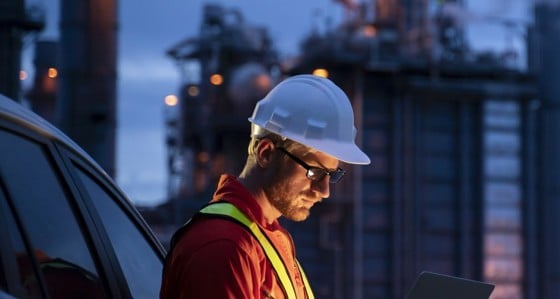
Making emissions management part of operational management
Making emissions management part of operational management for oil and gas companies.
Read more